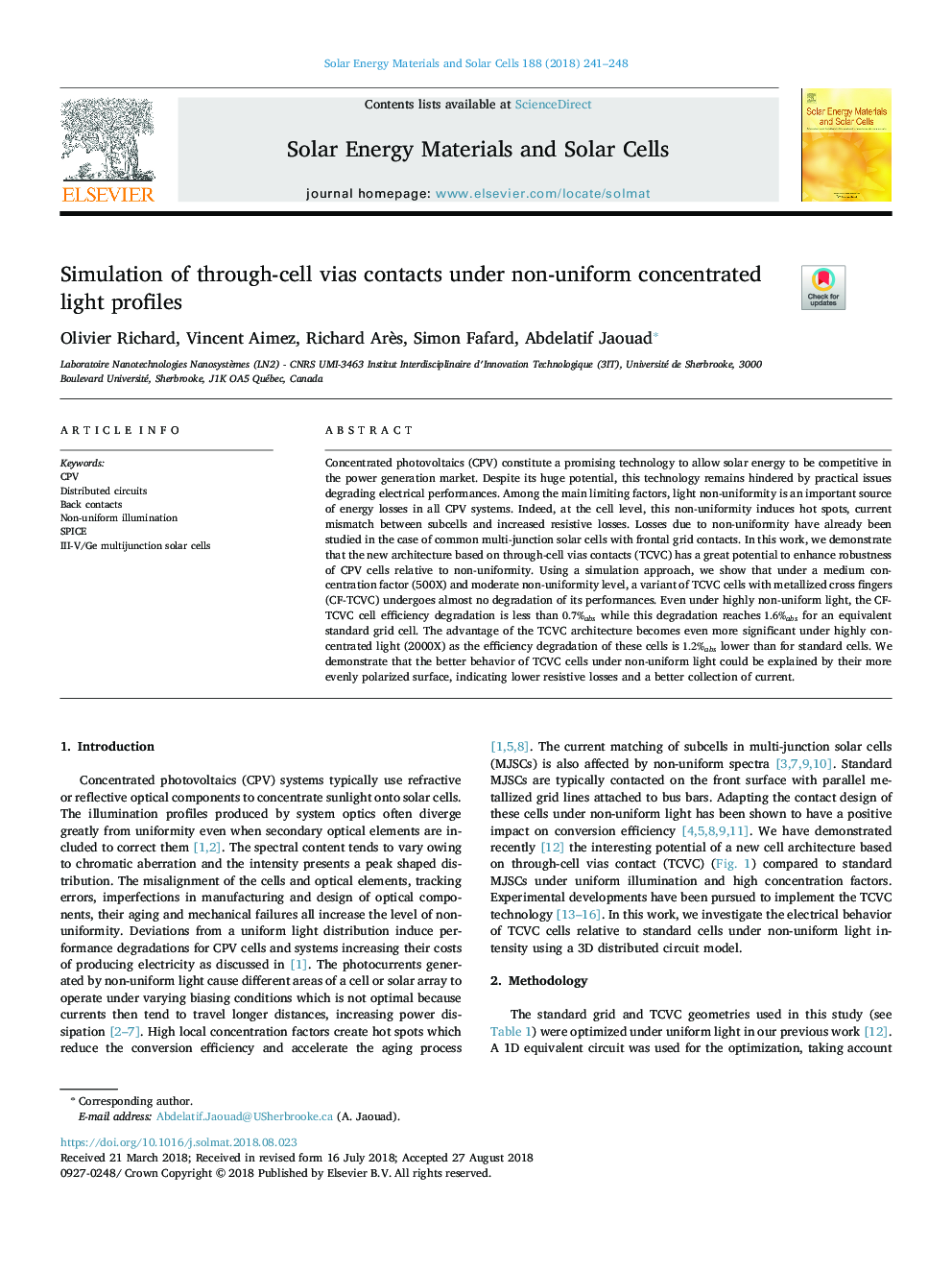| Article ID | Journal | Published Year | Pages | File Type |
|---|---|---|---|---|
| 10139017 | Solar Energy Materials and Solar Cells | 2018 | 8 Pages |
Abstract
Concentrated photovoltaics (CPV) constitute a promising technology to allow solar energy to be competitive in the power generation market. Despite its huge potential, this technology remains hindered by practical issues degrading electrical performances. Among the main limiting factors, light non-uniformity is an important source of energy losses in all CPV systems. Indeed, at the cell level, this non-uniformity induces hot spots, current mismatch between subcells and increased resistive losses. Losses due to non-uniformity have already been studied in the case of common multi-junction solar cells with frontal grid contacts. In this work, we demonstrate that the new architecture based on through-cell vias contacts (TCVC) has a great potential to enhance robustness of CPV cells relative to non-uniformity. Using a simulation approach, we show that under a medium concentration factor (500X) and moderate non-uniformity level, a variant of TCVC cells with metallized cross fingers (CF-TCVC) undergoes almost no degradation of its performances. Even under highly non-uniform light, the CF-TCVC cell efficiency degradation is less than 0.7%abs while this degradation reaches 1.6%abs for an equivalent standard grid cell. The advantage of the TCVC architecture becomes even more significant under highly concentrated light (2000X) as the efficiency degradation of these cells is 1.2%abs lower than for standard cells. We demonstrate that the better behavior of TCVC cells under non-uniform light could be explained by their more evenly polarized surface, indicating lower resistive losses and a better collection of current.
Related Topics
Physical Sciences and Engineering
Chemical Engineering
Catalysis
Authors
Olivier Richard, Vincent Aimez, Richard Arès, Simon Fafard, Abdelatif Jaouad,
